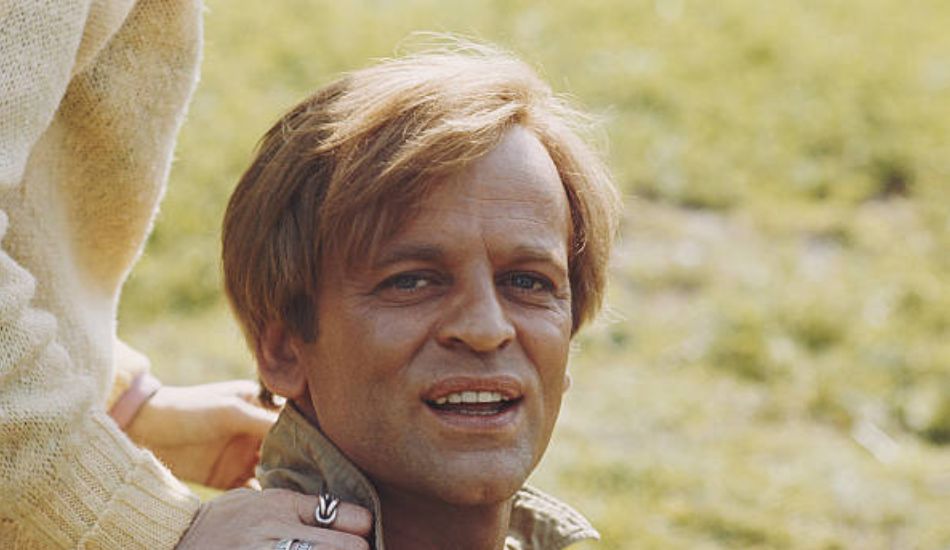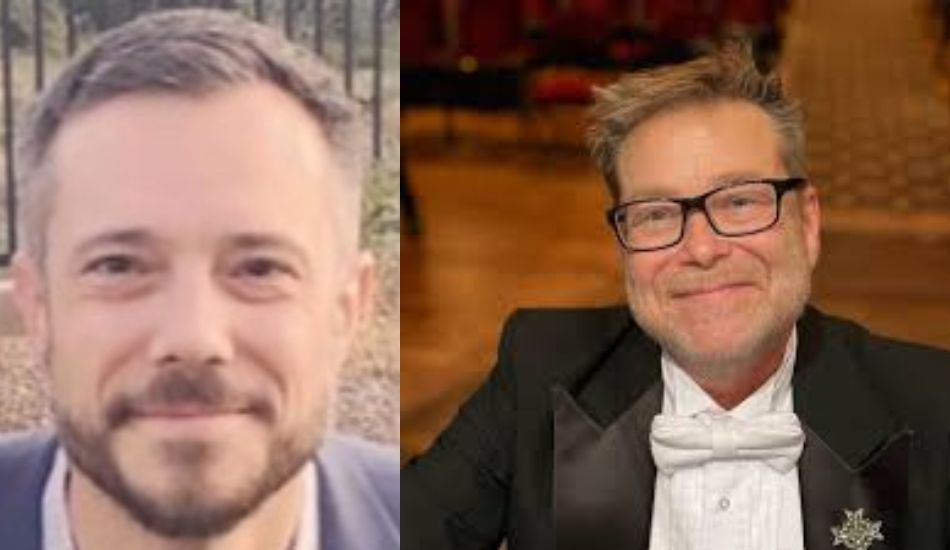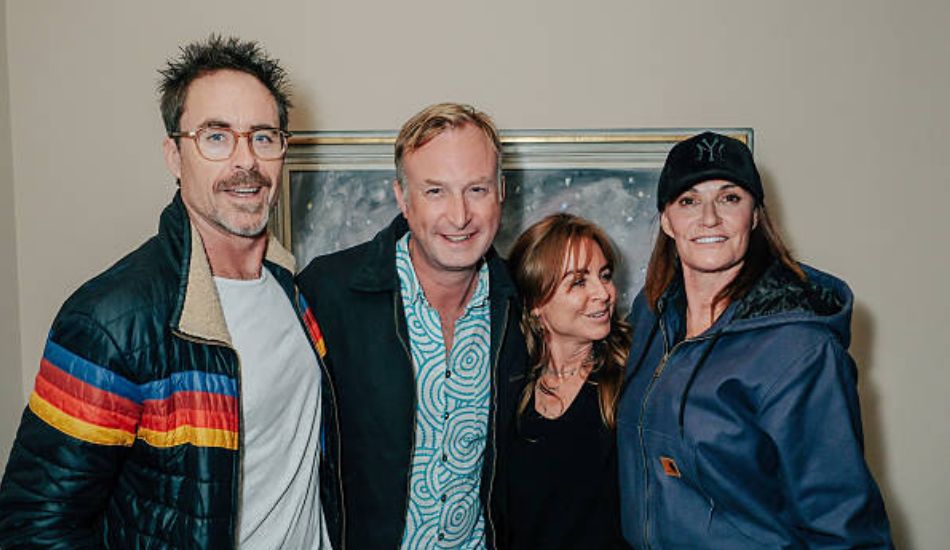Klaus Kinski – The Enigmatic Genius of German Cinema

Klaus Kinski was one of the most electrifying, unpredictable, and controversial figures in world cinema. A German actor celebrated for his wild energy, distinctive intensity, and unforgettable collaborations with director Werner Herzog, Kinski became both a cinematic legend and a figure of deep controversy. Born Klaus Günter Karl Nakszynski on October 18, 1926, in Zoppot (then part of the Free City of Danzig, now Sopot, Poland), he later adopted the stage name Klaus Kinski—a name that became synonymous with raw passion and madness on screen.
Throughout his life, Kinski built a career that few could match in sheer scale—appearing in more than 130 films between 1948 and 1989. His performances were intense and often unsettling, blurring the line between genius and insanity. Yet behind that extraordinary talent lay a deeply troubled personal life that was riddled with controversy, strained relationships, and disturbing accusations.
Klaus Kinski — Early Life and Background
Klaus Kinski was born into a modest family. His father, Bruno Nakszynski, was a pharmacist and former opera singer, while his mother, Susanne Lutze, worked as a nurse and was the daughter of a pastor. Growing up in the interwar years in a region scarred by shifting borders, Kinski experienced hardship early. His family faced poverty after the Great Depression, and the onset of World War II brought even greater struggles.
During the war, Kinski was drafted into the German Army (Wehrmacht). He was captured by British forces in 1944 and spent time as a prisoner of war in the United Kingdom. It was in captivity that he began exploring acting—performing in small theatrical productions for fellow prisoners. That experience planted the seed of what would become a lifelong obsession: performing.
After returning to Germany at the war’s end, Kinski found the country devastated. He joined small theatre companies and eventually began gaining recognition for his emotionally charged, often unrestrained acting style. Even from his earliest performances, he stood out as someone different—an artist who seemed possessed by his roles.
Rise to Stardom and Film Career
By the 1950s, Klaus Kinski’s theatrical intensity began to attract the attention of German filmmakers. He played a variety of supporting roles in postwar dramas and thrillers, but his true breakthrough came when he began working in European co-productions during the 1960s and 1970s.
Kinski’s magnetic screen presence made him ideal for complex characters—madmen, villains, outcasts, and tortured geniuses. His ability to portray obsession, rage, and despair made him one of the most recognizable faces of European cinema.
Klaus Kinski’s Best Movies and Collaborations
Although Kinski worked with dozens of directors, his collaborations with Werner Herzog remain legendary. Their partnership—both creative and volatile—produced some of cinema’s greatest masterpieces.
1. Aguirre, the Wrath of God (1972)
In one of his defining roles, Kinski played the deranged conquistador Don Lope de Aguirre, obsessed with finding El Dorado. His haunting performance, full of mania and grandeur, remains one of the greatest in film history.
2. Nosferatu the Vampyre (1979)
Kinski’s eerie transformation into the vampire Count Orlok in Herzog’s remake of Murnau’s silent classic cemented his reputation as a master of expressionistic horror. His pale visage and quiet menace made the character both terrifying and tragic.
3. Woyzeck (1979)
Based on Georg Büchner’s play, this film saw Kinski embody a poor soldier driven mad by cruelty and humiliation. His performance was raw, vulnerable, and deeply human.
4. Fitzcarraldo (1982)
In what became one of the most infamous film productions ever, Kinski portrayed an eccentric dreamer who attempts to haul a steamship over a mountain in the Amazon jungle. Behind the scenes, his feud with Herzog reached legendary proportions—but the resulting film was a masterpiece.
5. Cobra Verde (1987)
Their final collaboration, where Kinski played a slave trader, marked the end of their partnership. It also showcased the depth of their creative tension—one that pushed both men to extremes.
Beyond his work with Herzog, Kinski also appeared in a wide range of other films, including:
- The Great Silence (1968)
- For a Few Dollars More (1965)
- Doctor Zhivago (1965)
- Venom (1981)
- Creature with the Blue Hand (1967)
- And God Said to Cain (1970)
Altogether, his career spanned more than four decades, covering everything from spaghetti westerns to horror, historical drama, and avant-garde cinema.
Personality and Public Image
Klaus Kinski was known as much for his unpredictable temperament as for his artistry. He was often described as a “mad genius”, capable of breathtaking performances but prone to fits of rage, paranoia, and confrontation.
Filmmakers and co-stars frequently spoke of his volatile behavior on set. Herzog himself once admitted that their relationship was so extreme that they had discussed killing each other during filming. Despite these clashes, Herzog maintained that Kinski was irreplaceable—a “monster and a genius” who could express emotions no other actor could reach.
Kinski’s public readings of literature also became famous in Germany. His recitations of works by Villon, Rimbaud, and Nietzsche were intense theatrical events that showcased his powerful voice and magnetic stage presence.
Klaus Kinski’s Family, Relationships, and Personal Life
Klaus Kinski’s personal life was complex and deeply turbulent. He married three times and had three children, all of whom later pursued artistic careers in film and acting.
- First wife:Gislinde Kühbeck (married 1952, divorced 1955)
- Their daughter Pola Kinski (born 1952) later became an actress.
- Second wife:Brigitte Ruth Tocki (married 1960, divorced 1971)
- Their daughter Nastassja Kinski (born 1961) achieved international fame as an actress and model, starring in Tess (1979), Cat People (1982), and Paris, Texas (1984).
- Third wife:Minhoi Geneviève Loanic (married 1971, divorced 1979)
- Their son Nanhoï Nikolai Kinski (born 1976) also became an actor.
His relationships were often troubled. Former partners and children described him as manipulative and abusive. In later years, both Pola Kinski and Nastassja Kinski accused him of sexual and emotional abuse—allegations that cast a long shadow over his legacy. These revelations, though painful, became a crucial part of understanding the darker side of Kinski’s personality.
Klaus Kinski’s Net Worth
Because Kinski died in 1991, accurate financial details are scarce. Unlike Hollywood stars of his era, he did not accumulate vast wealth. Various film industry sources and biographical references estimate that his net worth at the time of death was modest, likely under $1 million USD.
Kinski lived a nomadic lifestyle, often moving between Europe and the United States, and was known for spending lavishly. He never seemed particularly motivated by money; instead, he chased intense, meaningful roles—often in low-budget or independent productions.
His true wealth lay not in money but in the artistic legacy he left behind—his performances continue to inspire actors, directors, and film scholars worldwide.
Klaus Kinski’s Age and Final Years
Kinski spent his later years living in Lagunitas, California, in relative seclusion. His final films were made in the late 1980s, and by then, his health and energy had begun to decline.
He died on November 23, 1991, of a heart attack, at the age of 65. His ashes were scattered in the Pacific Ocean. Although he died relatively young, he had already built one of the most prolific and controversial film careers in European history.
Legacy and Influence
Despite the many controversies surrounding him, Klaus Kinski remains a towering figure in world cinema. His intensity, physical expressiveness, and sheer emotional risk-taking inspired generations of actors who sought to capture something of his wildness.
His collaborations with Werner Herzog have been the subject of documentaries, books, and essays, most famously Herzog’s My Best Fiend (1999), which chronicled their volatile friendship. That film painted Kinski as both a creative force and a destructive presence—a man whose demons were inseparable from his genius.
Kinski’s daughter Nastassja Kinski continued his cinematic lineage, achieving global stardom in the 1980s. Through her and her brother Nikolai, Kinski’s influence carries on in the modern film world.
Even today, film students and critics revisit his movies for their raw, primal energy. Whether as Aguirre lost in the jungle or the lonely vampire Nosferatu, Kinski captured something elemental about human madness, obsession, and desire.
Klaus Kinski Wiki Summary
- Full Name: Klaus Günter Karl Nakszynski
- Stage Name: Klaus Kinski
- Born: October 18, 1926 – Zoppot, Free City of Danzig (now Sopot, Poland)
- Died: November 23, 1991 – Lagunitas, California, USA
- Age at Death: 65
- Nationality: German
- Occupation: Actor, performer
- Years Active: 1948 – 1989
- Father: Bruno Nakszynski
- Mother: Susanne Lutze
- Married To: Gislinde Kühbeck, Brigitte Tocki, Minhoi Loanic
- Children: Pola Kinski, Nastassja Kinski, Nikolai Kinski
- Best Known For: Aguirre the Wrath of God, Nosferatu the Vampyre, Fitzcarraldo, Woyzeck
- Net Worth (Estimated): Approx. $500,000 – $1 million USD
- Legacy: Renowned for his artistic brilliance and notorious temperament; one of cinema’s most unforgettable figures.
Conclusion
Klaus Kinski’s life was a paradox—a blend of brilliance and destruction. His performances remain some of the most gripping in cinema history, and his name is inseparable from the golden age of European art film. Yet his personal demons, volatile nature, and disturbing allegations ensure that his story will always provoke debate.
Love him or loathe him, Klaus Kinski was a force of nature who redefined what acting could be. His legacy endures through his unforgettable performances, the films he made with Werner Herzog, and the continued careers of his children who followed his path into the world of film.
For more biographical deep dives and actor profiles like this, visit fanzineblog — your source for stories behind the world’s most fascinating personalities.

